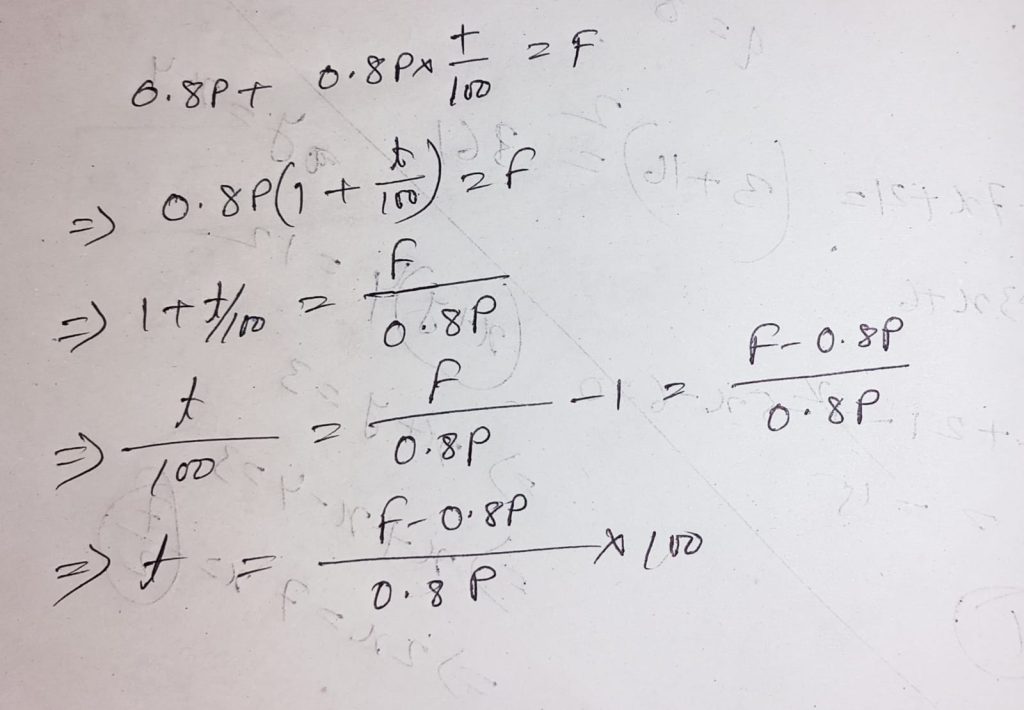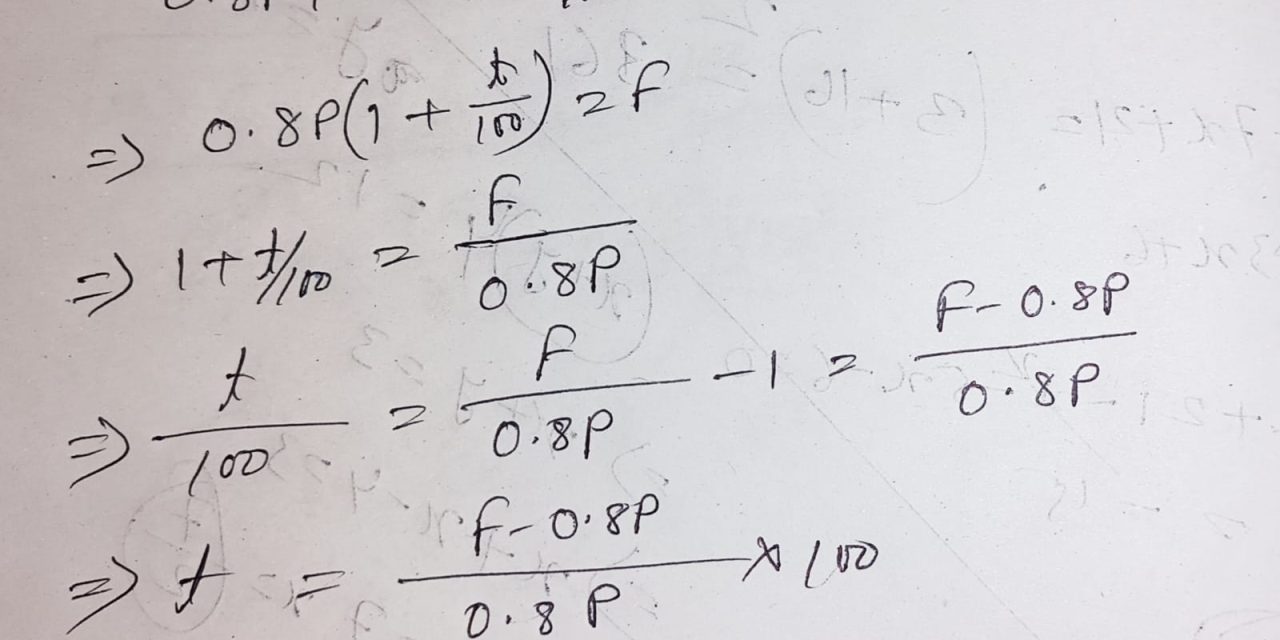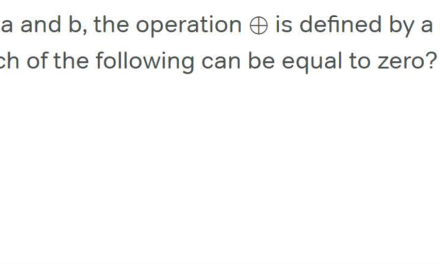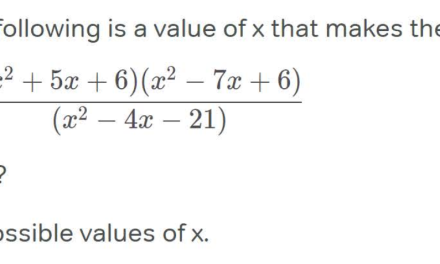Amanda bought a trolley luggage bag that was offered at a 20% discount off its original price of P dollars. A sales tax of t percent was applied to the discounted price, so Amanda paid a total of F dollars to the cashier. Which of the following represents t in terms of P and F?

We can represent the sales tax rate (t) in terms of P (original price) and F (total price paid) using the following equation:
1. Discounted Price: First, let’s find the discounted price of the luggage bag. Discount is a percentage reduction from the original price. We can calculate it as:
Discounted price = P * (1 – discount rate)
Here, the discount rate is 20% which is equivalent to 20/100 or 0.2 in decimal form.
Therefore, Discounted price = P * (1 – 0.2) = 0.8P
2. Sales Tax and Total Price: The sales tax (t%) is applied to the discounted price. So, the amount Amanda paid for the sales tax is:
Sales Tax amount = Discounted price * (t/100)
The total price (F) paid by Amanda is the sum of the discounted price and the sales tax amount:
F = 0.8P + Discounted price * (t/100)
3. Isolating t: Now, we can rearrange the equation to isolate t:
F = 0.8P + 0.8P * (t/100)
F = 0.8P (1 + t/100)
Divide both sides by 0.8P:
F / (0.8P) = 1 + t/100
Subtract 1 from both sides:
(F / (0.8P)) – 1 = t/100
Multiply both sides by 100 to express t as a percentage:
t = 100 * ((F / (0.8P)) – 1)
Therefore, t = 100 * ((F / (0.8P)) – 1) represents the sales tax rate (t) in terms of the original price (P) and the total price paid (F).






Recent Comments